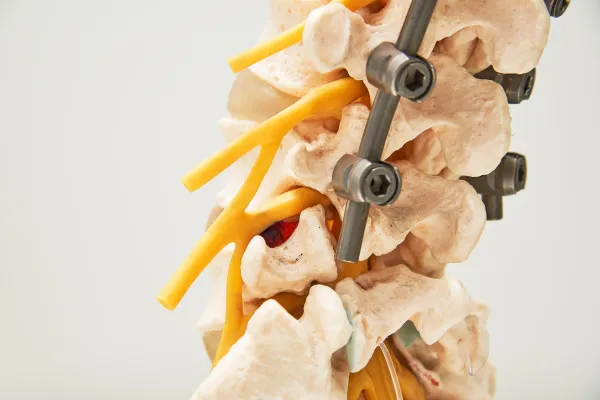Answer These Quick Questions to Ace Your Spinal Catheter Skills
Hint: Make sure you know if the surgeon performed a laminectomy. Although reporting for spinal catheters can be tricky, you don’t have to wonder about how to submit these claims. Know exactly how to report indwelling catheters for intermittent bolus or continuous infusion, what codes to report if the surgeon performed a laminectomy, and how to report a follow-up visit. Answer the following questions to make sure your spinal catheter claims are up to snuff. Notice These 4 Codes For Indwelling Catheter Question 1: If the surgeon placed an indwelling catheter, which CPT® codes should you report? Answer 1: If the surgeon placed an indwelling catheter, you would code one of the following codes: Check location: You select either of these codes depending upon the anatomical location where your surgeon placed the catheter in the spine. “The cervicothoracic placement is coded distinctly from lumbosacral placement because the cervicothoracic region contains the spinal cord, and placement of catheters in this region carries greater risk than in the lumbosacral spine,” says Gregory Przybylski, MD, immediate past chairman of neuroscience and director of neurosurgery at the New Jersey Neuroscience Institute, JFK Medical Center in Edison, New Jersey. Know Whether Surgeon Performed Laminectomy For Tunneled Approach Question 2: What codes should we report if the surgeon performed a laminectomy? Answer 2: Before you report the spinal catheters, you must first confirm if your surgeon did a laminectomy. If the surgeon did perform a laminectomy, you would report 62351 (Implantation, revision or repositioning of tunneled intrathecal or epidural catheter, for long-term medication administration via an external pump or implantable reservoir/infusion pump; with laminectomy). No laminectomy: However, if the surgeon did not perform a laminectomy, you report code 62350 (Implantation, revision or repositioning of tunneled intrathecal or epidural catheter, for long-term medication administration via an external pump or implantable reservoir/infusion pump; without laminectomy). Note: The codes 62350 and 62351 apply for the implantation, revision, or repositioning of the spinal catheters for long-term infusion by external or implanted pump. So, you do not need to confirm how your surgeon handled the spinal catheter, other than whether a laminectomy was performed. The two codes also apply to both intrathecal and epidural catheters. Therefore, you may report these regardless of whether your surgeon placed the catheter in the epidural or intrathecal space. Factor in Follow-Up Visit Question 3: How would we report the service if the patient has to return for a follow-up exam of the implantation of a spinal catheter? Answer 3: After the implantation, revision, or repositioning of a tunneled spinal catheter, the patient may need to return for a follow-up examination of the catheter. Codes 62350 and 62351 have a global period of 10 days. If you read that the patient returned for follow-up during the global period, you report 99024 (Postoperative follow-up visit, normally included in the surgical package, to indicate that an evaluation and management service was performed during a postoperative period for a reason[s] related to the original procedure). To report follow-up after a non-tunneled catheter placement, you may check documentation to confirm the complexity of the problem and how long the evaluation lasted and accordingly report evaluation and management codes 99212 (Office or other outpatient visit for the evaluation and management of an established patient, which requires at least 2 of these 3 key components: A problem focused history; A problem focused examination; Straightforward medical decision making. Counseling and/or coordination of care with other physicians, other qualified health care professionals, or agencies are provided consistent with the nature of the problem(s) and the patient’s and/or family’s needs. Usually, the presenting problem(s) are self limited or minor. Typically, 10 minutes are spent face-to-face with the patient and/or family.) through 99215 (… A comprehensive history; A comprehensive examination; Medical decision making of high complexity. Counseling and/or coordination of care with other physicians, other qualified health care professionals, or agencies are provided consistent with the nature of the problem(s) and the patient’s and/or family’s needs. Usually, the presenting problem(s) are of moderate to high severity. Typically, 40 minutes are spent face-to-face with the patient and/or family.) Look to 62355 For Catheter Removal Question 4: What CPT® code should we report if the surgeon removed a previously placed catheter Answer 4: You should carefully read the procedure note to confirm if the surgeon removed a previously placed tunneled catheter. When the surgeon removes a spinal catheter, you should report 62355 (Removal of previously implanted intrathecal or epidural catheter). This code applies to tunneled spinal catheters for long-term medication administration and not to percutaneously-placed catheters for short term bolus or continuous infusions, according to Przybylski. Note: Like 62350 and 62351, 62355 also applies to both epidural and intrathecal catheters. You can report 62355 for removal of either an epidural or an intrathecal catheter. Tip: Do not forget to report the removal of the pump in addition to removal of a catheter if an internal pump was also implanted. For pump removal you report code 62365 (Removal of subcutaneous reservoir or pump, previously implanted for intrathecal or epidural infusion). “Don’t forget to apply modifier 58 (Staged or related procedure or service by the same physician or other qualified health care professional during the postoperative period) if the removal procedure occurs within the global period of the placement procedure and was prospectively planned to be removed,” Przybylski says.




